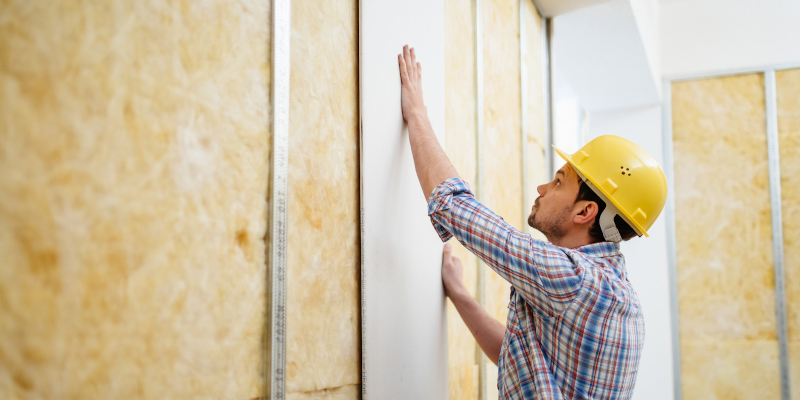Affordable Drywall Repair Options for Your Fort Worth Property
Affordable Drywall Repair Options for Your Fort Worth Property
Blog Article
Total Overview to Effective and Reliable Drywall Installment
Drywall installation is a critical element of any type of building or renovation job, requiring a careful method to make certain both efficiency and integrity. It is vital to check out the subtleties of each action in the process, as they jointly contribute to the total success of the drywall installation.
Essential Devices for Drywalling
When starting a drywall installment task, having the right devices is important for achieving a specialist finish. Important tools include a drywall blade, tape action, and a T-square, which are basic for precise dimensions and smooth cuts. A drywall lift is also very advantageous, specifically for ceiling setups, enabling for less complicated handling of heavy panels.
For fastening the drywall, a cordless drill and drywall screws are necessary. The drill should be geared up with a drywall bit to make sure effectiveness and accuracy. Furthermore, a key tool is the drywall saw, which assists in cutting around electric outlets and other challenges.

Moreover, protective gear such as security glasses and a dust mask are vital to ensure individual safety and security during the installation procedure. Making use of the right tools not just boosts the quality of the setup however also simplifies the operations, making the project a lot more reliable overall.
Preparing the Space

Next, analyze the condition of the ceilings and wall surfaces. Fix any type of existing damages, such as holes, cracks, or peeling off paint, to ensure a smooth and also surface area for drywall application. In addition, check for electric outlets, plumbing lines, and HVAC air ducts, marking their places to avoid complications during installation.
It is also essential to determine the space accurately, identifying the dimensions of the ceilings and wall surfaces to determine the ideal quantity of drywall needed. Develop a detailed strategy that consists of the layout and orientation of the drywall panels.
Installation Methods
Efficient installment techniques are crucial for accomplishing an expert finish in drywall projects. Correct dimension and cutting of drywall sheets are basic steps. Always gauge the wall surface area precisely, allowing for any buttons or outlets. Utilize an utility blade for clean cuts, racking up the paper face and breaking the board along the racked up line.
When hanging drywall, begin with the top and work downward, guaranteeing that the lengthy side of the board is perpendicular to the framing. Secure the sheets with screws instead than nails, which give higher holding power and reduce the danger of popping. Area screws every 12 inches along the sides and every 16 inches in the area of the board.
For edges, use edge beads to accomplish sharp, tidy sides. When mounting on ceilings, make use of website link a drywall lift or have a companion aid in holding the sheets in position (drywall repair). Preserve a void of about 1/4 inch above the flooring and ceiling to suit expansion and contraction
Finishing Touches

As soon as the tape is in place, it's time to apply the very first coat of joint substance, additionally understood as mud. Use a 10 to 12-inch taping blade to spread out the substance evenly over the taped joints, feathering the edges to mix with the surrounding drywall.
Permit the compound to completely dry extensively, normally 24 hours. After drying, sand the surface area lightly with fine-grit sandpaper to eliminate any type of flaws. drywall repair. Repeat the mudding and fining sand process, typically 2 to 3 layers, helpful hints ensuring each use this link layer is smooth and flush with the drywall surface area
Typical Blunders to Avoid
Lots of do it yourself enthusiasts experience challenges throughout drywall setup that can endanger the last outcomes. One common mistake is stopping working to effectively cut and gauge drywall sheets. Inaccurate cuts can bring about gaps and irregular joints, making completing much more labor-intensive. Additionally, overlooking to startle joints can develop powerlessness in the wall surface, resulting in potential breaking or sagging gradually.
An additional regular mistake is improper attachment. Making use of too few screws or nails can bring about loose drywall, while overdriving fasteners can trigger the paper to tear, weakening the structure. It's critical to maintain constant spacing, commonly every 16 inches, and to make sure that fasteners are flush with the surface area.
In addition, not attending to moisture issues prior to setup can result in mold and mildew growth and structural damage. Always analyze the setting and use moisture-resistant drywall in high-humidity areas.
Conclusion
Efficient and dependable drywall installment requires careful interest to detail throughout the process. By utilizing essential tools, preparing the area effectively, and adhering to best techniques in installation strategies, a remarkable surface can be achieved. Furthermore, careful application of joint substance and tape during the completing phase enhances durability and appearance. Preventing usual blunders further adds to a professional result, underscoring the relevance of accuracy and strategy in successful drywall projects.
It is necessary to discover the nuances of each action in the process, as they jointly add to the overall success of the drywall installment.When embarking on a drywall installment job, having the right tools is crucial for accomplishing an expert finish.For attaching the drywall, a cordless drill and drywall screws are essential.Effectively preparing the area is crucial for an effective drywall setup.Reliable setup techniques are important for attaining a specialist surface in drywall jobs.
Report this page